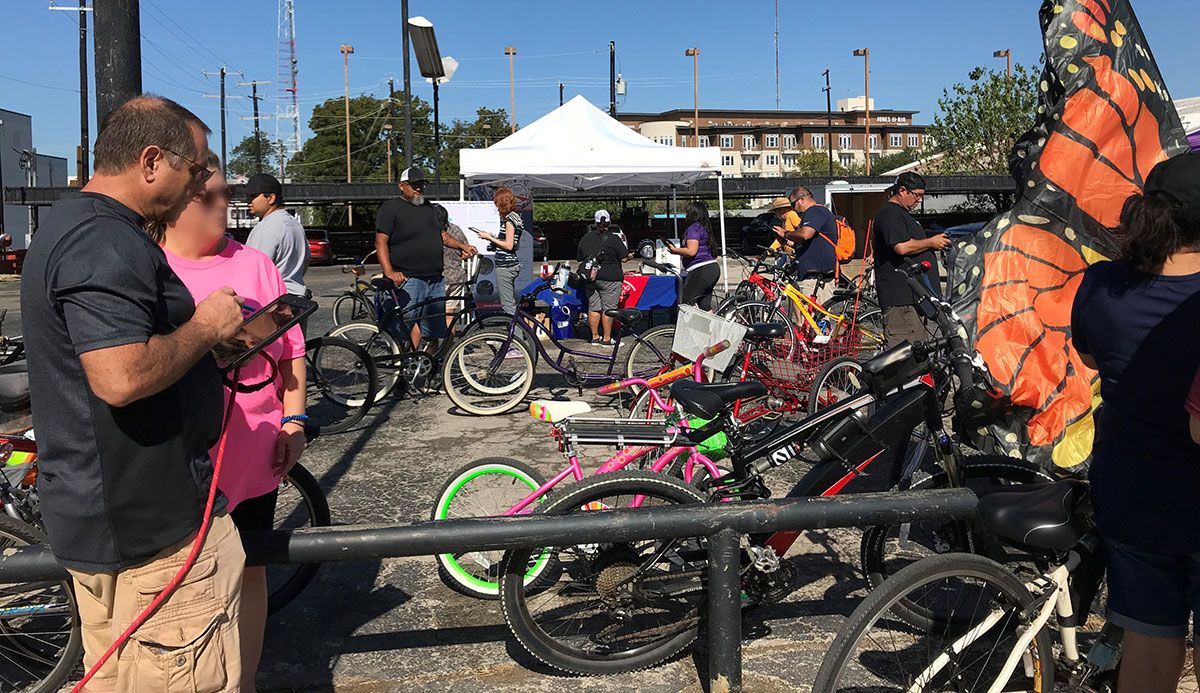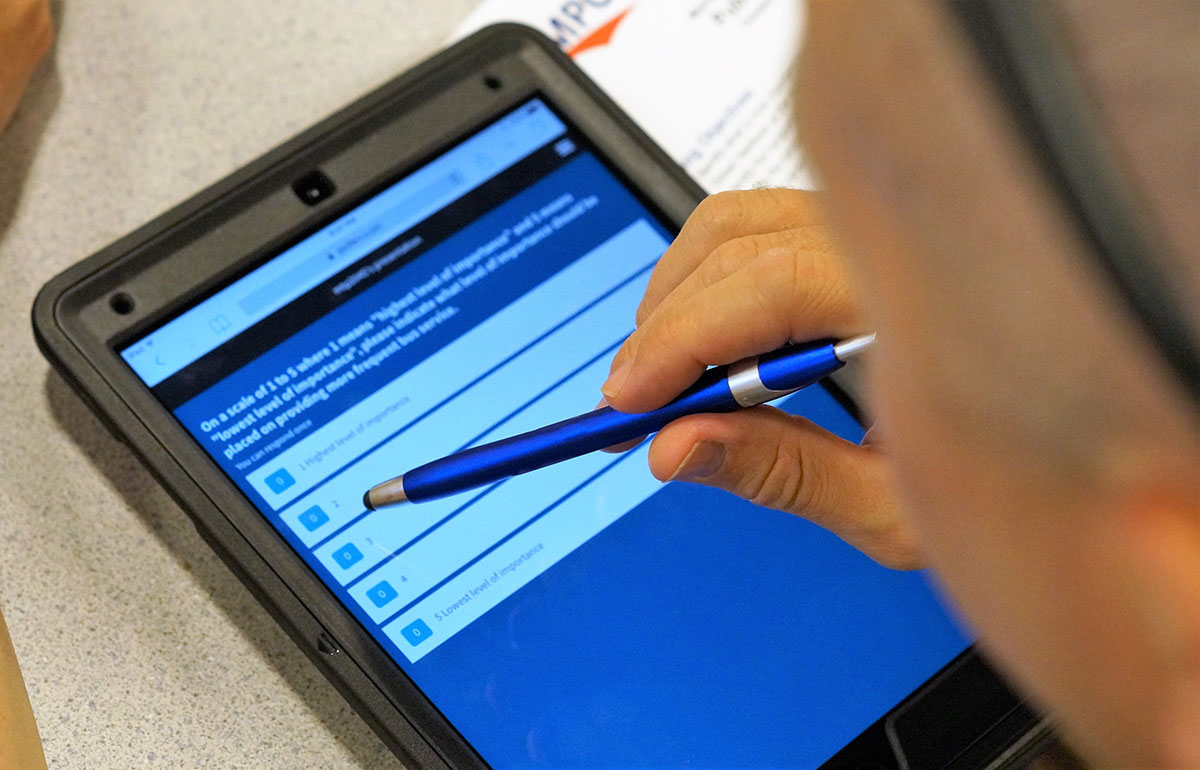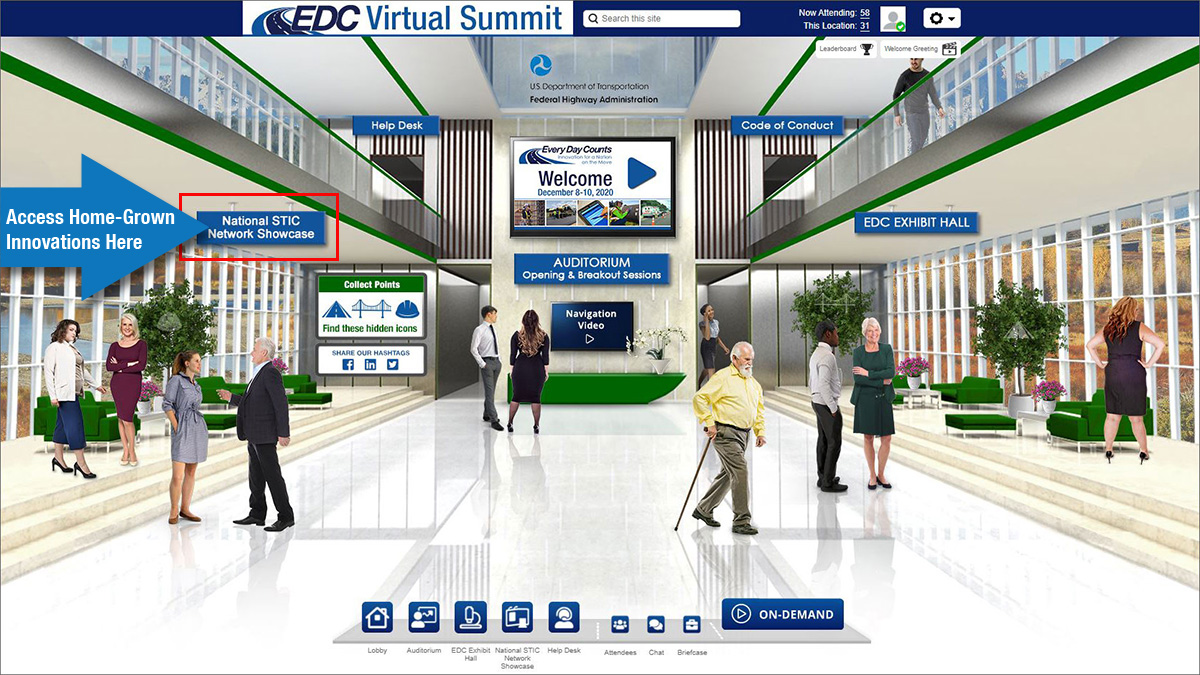June 3, 2021
Innovation of the Month:
Virtual Public Involvement
Public involvement is a critical component in the transportation decision-making process, allowing for meaningful consideration and input from interested individuals. Early and strong public engagement helps transportation agencies accelerate project delivery by identifying and addressing public concerns early in, and throughout, the transportation planning and project delivery processes. Virtual public involvement (VPI) strategies enhance face-to-face information sharing by providing additional options for engaging wider, more diverse audiences and addressing barriers such as participants' busy schedules.

Over the last year, connecting virtually with the public became a matter of necessity. The extent to which agencies used VPI varied, but the value VPI brought to the table became clear. During EDC-6, the VPI team intends to assist agencies to build upon the progress made during EDC-5 and institutionalize VPI as part of regular business practices. In addition, the team plans to work with state, local and tribal governments on ways to effectively integrate VPI use with traditional and in-person public involvement techniques, give stakeholders equitable access to the transportation decision making process, and effectively engage traditionally underserved communities.
Nearly all State DOTs and most local agencies use websites to post information about their activities. As agency use of social media tools and mobile applications increases, the public can access user-friendly features such as online videos, podcasts, crowdsourced maps, and other interactive forums to receive information and provide input. These opportunities for information sharing and public involvement in the transportation planning, programming, and project development process include:
- Project Visualizations
- DIY Videos
- Crowdsourcing Tools
- Online Meetings
- Online Mapping Tools
- All-in-One Tools
- Digital Tools to Enhance In-Person Event
Over the next few weeks, the VPI team will provide case studies to illustrate agency success stories across the country using these techniques.
Whether your agency is looking to start its VPI journey or take it to the next level, the FHWA VPI website offers a series of resources including fact sheets, videos and webinars, and peer exchange reports and recordings that offer in-depth information on many VPI techniques and presentations from your peer transportation agencies.
To learn more about virtual public involvement, contact Jill Stark, Lana Lau, or Carolyn Nelson, EDC-6 team co-leads or visit the innovation’s EDC website. If you would like ongoing updates from the VPI team, you can subscribe to the team’s e-news updates here.

All Public Roads and Systemic Analysis—Two Pillars of the FoRRRwD Approach
More than 30 people die each day on rural roadway departure crashes. These deaths, scattered across a vast network of rural roadways, don’t typically make the news, but account for nearly 30 percent of annual roadway deaths. The Focus on Rural Roadway Departures (FoRRRwD) program addresses this problem by highlighting four pillars that can help reduce rural roadway departures.
The first FoRRRwD pillar- all public roads, is important for establishing the scope of the problem. It is estimated that over 40 percent of fatalities happen on roads not typically maintained by State DOTs. Reducing these deaths requires a partnership. State DOT's have helped by making funds available to local agencies, making it easier to apply for funding, and assisting with data acquisition, compilation and analysis.
The second pillar—the systemic approach to identifying crash risk, is a data-driven method to identify where an agency should focus its attention for rural roadway departures. Systemic analysis uses roadway geometrics, traffic characteristics, and maintenance information along with crash data to identify risk factors, then uses those risk factors to identify locations at highest risk of future crashes. Low-cost countermeasures are installed at targeted, high-risk locations across the system, even if there has not been a crash. This is critical since rural roadway departure crashes are generally not concentrated at "hot spots".
To learn more about FoRRRwD, contact Cate Satterfield, FHWA Office of Safety, or Dick Albin, FHWA Resource Center. Read more about these pillars in article featured in the Fall 2020 Public Roads and stay tuned over the next few weeks for another article highlighting the final two pillars of FoRRRwD.
STEM Lessons for Kids Emphasize Roadway Design and Pedestrian Safety
To help children, tweens and young adults take a step closer to careers in science and math, FHWA's Safe Transportation for Every Pedestrian (STEP) program developed five Science, Technology, Engineering, and Mathematics (STEM) lessons. The lessons, for K-8th grade students, emphasize roadway design and pedestrian safety.
Lessons include calculations for items such as vehicle stopping distance for older students, real-world examples of key pedestrian safety concepts, and hands-on activities including building mock streetscapes. The lessons are designed for in-classroom, afterschool events, and smaller group activities. Each STEM lesson features an easy to follow format with step-by-step instructions, lists of suggested materials, and visual aids. The included primer also describes key concepts in an accessible manner so that anyone can use the materials and become familiar with the why and how of these concepts.
Could YOU be the next instructor to engage with local youth on pedestrian safety? Contact Becky Crowe with the FHWA Office of Safety or Peter Eun with the FHWA Resource Center to learn how.
7 States Receive More Than $5.6 Million in AID Demonstration Grants
FHWA has announced more than $5.6 million in Accelerated Innovation Deployment (AID) Demonstration program grants to help seven states make the most of limited resources. The program allows states to bring projects to fruition in a more cost-effective way by using innovative practices. Alabama, Arizona, Michigan, New Hampshire, Rhode Island, South Dakota and Utah will receive funds in this round of awards.
For more information and details on each State’s award, view the official press release. To learn more about AID Demonstration, contact Fawn Thompson, program coordinator.
Discover Home-Grown Innovations from Around the Country

Are you interested in homegrown innovations being used by your peers in other parts of the country? Check out the National STIC Network Showcase, a component of the EDC-6 Virtual Summit. Over 200 innovations, submitted by State DOTs, Local Agencies, and other STIC members, are grouped into eight topic area categories for easy navigation. This site features a convenient one-time registration that will allow you to continue accessing information throughout 2021.
The showcase prominently features several innovations focused on virtual engagement. Learn about the New Hampshire Local Technical Assistance Program's "Tuesday Top 10 at 10 with T2", a live-streamed 5-7 minute video series that lists 10 items that often include important updates and public service and outreach resources for local agencies; Utah DOT mapping and visualization tools, which help stakeholders understand proposed traffic movements and active transportation trail connections on an interstate widening project; Missouri DOT’s social media surveys, which converted an annual transportation survey into a digital format and used targeted social media ads to obtain feedback, resulting in reduced cost, improved response rates, better demographic data, and an easily repeatable template for future surveys; and the North Carolina DOT's public involvement effort for improved community relations, which demonstrated the benefits of early communication, strategic communication planning, and business outreach during a long-term, major freeway construction project.
Celebrate the ingenuity of your peers and read about these innovations—developed and deployed in-house at transportation agencies nationwide. Additionally, we invite you to watch the one-hour presentations on-demand that feature many of these and other innovations.

Will You Build a Better Mousetrap?
The FHWA Local Aid Support office is taking nominations for Build a Better Mousetrap (BABM) 2021 until June 11, 2021.
BABM celebrates innovative solutions for challenges that local and tribal transportation workers encounter. These innovations can range from the development of tools and equipment modifications to the implementation of new processes that increase safety, reduce cost, and improve efficiency of our transportation system.
Read the BABM Planning Guide to learn more about the entry categories, how to participate, and the selection criteria. To learn more about BABM 2021, contact your local technical assistance program (LTAP).
About EDC
Every Day Counts, a State-based program of the Federal Highway Administration’s Center for Accelerating Innovation, works with State, local, and private sector partners to encourage the adoption of proven technologies and innovations to shorten and enhance project delivery.
Recommended Citation:
U.S Department of Transportation, Federal Highway Administration
EDC News; June 3, 2021
Washington, DC
https://doi.org/10.21949/1521361


